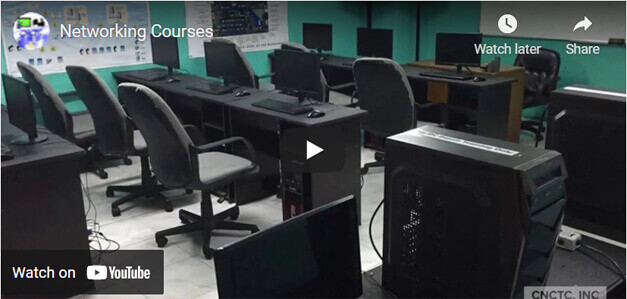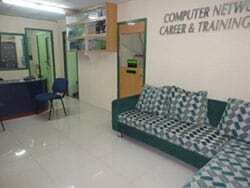
Key Features – Live Online
- 4 days Instructor-Led Live Online Classroom
- Webex Virtual Class for interactive near-classroom experience
- Access to Remote Lab PC for Hands-On activities
- Unlimited Practice exams
- In-House Linux LPIC Testing Facility
- Integrated Courseware in the Learning Management System
- Step by Step guide for challenging hands-on lab activities
- Flexible Schedules – Both Weekdays and Weekends Classes
- Get Trained by LPIC-2 Linux Professional Certified Expert Trainer with Over 15 Years of Industry Experience
- No. 1 Training Center for LPIC-2 Linux Professional Courses
- E-learning Access for Pre-course and Post-Training Support
- Best Price Guaranteed for LPIC-2 Linux Professional Courses
Key Features – Face to Face
- 4 days Instructor-Led Face to Face Classroom training
- We are a TESDA Registered Training Center
- Offering Flexible Schedules – Both Weekdays and Weekends Classes
- Get Trained by LPIC-2 Linux Professional Certified Expert Instructor with Over 15 Years of Industry Experience
- In-House Linux LPIC Testing Facility
- No. 1 Training Center for LPIC-2 Linux Professional Courses
- We Guarantee the Best Price for LPIC-2 Linux Professional Courses
Key Features – 1 on 1
- Gain the technical skills needed in the workplace. 1 on 1 training is the best way to learn
- The quickest way to master any of our course offerings.
- Experience superb hands-on laboratory activities and unobstructed attention from your trainer.
- Guaranteed to start the Training
Trainee Feedbacks
About the Course:
This course provides you with hands-on learning on advanced levels of Linux administration and configuration. You are on the best part of Linux training if you reach this level. You will learn a lot. All key topics in this course will enable you to set up, install, maintain, and manage Linux servers used by popular web hosting companies. This course will also help you pass the LPIC 2 advanced level certification exam codes 201 and 202.
WHAT YOU’LL LEARN
- Implement, maintain, and administer advanced Linux kernel operations and perform system startup operability and maintenance
- Implement advanced file system management
- Deploy and administer advanced networking security using firewall and VPN
- Install and configure the DHCP server
- Deploy advanced DNS server
- Install administer, and maintain Web servers, file servers, and SSH
- Implement and deploy FTP, NFS, and Samba
- Management and purchasing automation.
WHO SHOULD ATTEND
This advanced LPIC Linux Administrator course is for organizations and individuals who are looking to manage, deploy, administer, configure and maintain a Linux Secure Web Servers, DNS Servers, Email Servers. and File and Application Servers. It’s perfect for individuals pursuing the Linux Certification path and to Network administrators looking to pass the LPIC 2 exams.
CERTIFICATION EXAMS:
- LPIC-2 Exam 201, Part 1 of 2, version 4.5- 140 USD
- LPIC-2 Exam 202, Part 2 of 2, version 4.5- 140 USD
PREREQUISITE
You must be an active LPIC-1 certification holder, meaning you need to pass LPIC 1 first.
EMPLOYMENT OBJECTIVES
Upon completion of the course, trainees will be qualified to be a junior network engineer, Linux Network Administrator
COURSE CURRICULUM
LPIC 2 Syllabus
LPIC 201
- Measure and Troubleshoot Resource Usage
- Measure CPU usage
- Measure memory usage
- Measure disk I/O
- Measure network I/O
- Measure firewalling and routing throughput
- Predicting Future Resource Needs
- Monitor IT infrastructure usage
- Linux Kernel Components
- Implementing different types of kernel images
- Identifying stable and development kernels and patches
- Using kernel modules.
- Compiling a kernel
- Recompiling the Linux kernel
- Updating and noting changes in a new kernel
- Creating an initrd image
- Installing new kernels.
- Managing and Troubleshooting Kernel runtime
- Using command-line utilities to get information about the currently running kernel and kernel modules
- Manually load and unload kernel modules
- Customizing SysV-init system startup
- Interacting with systemd targets and SysV init run levels.
- Performing System Recovery
- BIOS and UEFI
- NVMe booting
- Using GRUB version 2 and Legacy
- Using grub shell
- Using Alternate Bootloaders
- Configuring and Mounting different filesystem
- Using and configuring fstab
- Using tools and utilities for manipulating swap partitions and files
- Using UUIDs for identifying and mounting file systems
- Understanding systemd mount units
- Manipulating standard filesystems and monitoring SMART devices.
- Creating and configuring filesystems
- Creating filesystems for devices such as CD-ROMs and encrypted filesystems.
- Implementing autofs configuration files
- Understanding automount units
- UDF and ISO9660 tools and utilities
- Implementing and Configuring RAID 0, 1 and 5
- Configuring kernel options to support various drives.
- Using software tools to view & modify hard disk settings.
- Using tools and utilities to configure DMA for IDE devices such as ATAPI and SATA
- Using Tools and utilities to manipulate and analyze system resources
- Create and remove logical volumes, volume groups, and physical volumes.
- Resizing, renaming, creating, and removing logical volumes, volume groups, and physical volumes
- Configuring a network device to connect to a local, wired or wireless, and a wide-area network.
- Configure communication between subnets within a single network including both IPv4 and IPv6 networks.
- Configuring and installing ethernet network interfaces
- Configuring access to wireless networks
- Configuring network devices to implement network authentication schemes.
- Configuring a multi-homed network device and resolving communication problems.
- Using utilities to manipulate routing tables
- Using utilities to analyze the status of the network devices and TCP/IP traffic
- Troubleshooting Network Issues
- Identify and correct common network setup issues,
- Install, execute, and unpack programs from sources
- Using system tools to back up important system data.
- Perform partial and manual backups.
- Verify the integrity of backup files.
- Partially or fully restore backups.
- Automate communication with users through logon messages
- Informing active users of system maintenance
LPIC 202
- Deploy and install DNS server
- Configuring BIND for caching-only DNS server.
- Managing and configuring DNX server and server logs
- Using BIND 9.x configuration files and utilities
- Reloading modified configuration and zone files
- Creating and maintaining DNS zones
- Creating a zone file for a forward or reverse zone
- Securing a DNS server
- Configuring BIND to run in a chroot jail
- Configuring BIND using the forwarders statement
- Configuring and using transaction signatures (TSIG)
- Deploying and Installing a web server
- Monitoring the server load and performance
- Restricting client user access
- Configuring support for scripting languages
- Setting up client user authentication.
- Configuring server options to restrict the usage of resources.
- Configuring a web server to use virtual hosts and customize file access.
- Implementing Apache configuration for HTTPS
- Configuring a web server to provide HTTPS.
- Install the key and certificate, including intermediate CAs
- Configuring Virtual Hosting using SNI
- Implementing a proxy server
- Installing and configuring a proxy server
- Implementing policies, authentication, and resource usage.
- Configuring Squid 3.x
- Implementing Nginx as a web server and a reverse proxy
- Install and configure a reverse proxy server, Nginx.
- Deploying and Installing SAMBA Server
- Configuring Samba server for various clients.
- Setting up Samba as a standalone server
- Integrating Samba as a member in an Active Directory.
- Configuring of simple CIFS and printer shares
- Configuring Linux client to use a Samba server
- NFS Server Configuration
- Export filesystems using NFS.
- Implementing access restrictions, mounting an NFS filesystem on a client, and securing NFS.
- Deploy and install DHCP Server
- Configuring a DHCP server.
- Configuring a DHCP relay agent and maintaining the DHCP server.
- Implementing PAM authentication
- Configuring PAM to support authentication using SSSD functionality.
- Monitoring LDAP client usage
- Performing queries and updates to an LDAP server.
- Adding and managing users.
- Configuring an OpenLDAP server
- Implementing Access Control
- Deploy and Install e-mail server
- Configuring and managing an e-mail server
- Configuring e-mail aliases, e-mail quotas and virtual e-mail domains.
- Configuring internal e-mail relays and monitoring e-mail servers.
- Creating Configuration files for postfix
- Using Basic TLS configuration for postfix
- Understanding SMTP protocol
- Managing E-Mail Delivery
- Implementing client e-mail management software
- Filter, sort, and monitor incoming user e-mail.
- Managing Remote E-Mail Delivery
- install and configure POP and IMAP daemons.
- Deploy and Install a router
- Configuring a system to forward IP packet
- Perform network address translation (NAT, IP masquerading)
- Configuring port redirection, managing filter rules and averting attacks.
- Using iptables and ip6 tables configuration files, tools and utilities
- Port redirection and IP forwarding
- Securing FTP servers
- Configuring FTP server for anonymous downloads and uploads.
- Using Secure shell (SSH)
- Configuring and secure an SSH daemon.
- Managing keys and configuring SSH for users.
- Manage SSH login.
- Using OpenSSH configuration files, tools and utilities
- Managing restrictions for the superuser and the normal users
- Install, configure, and run intrusion detection systems and apply security patches and bugfixes.
- Using tools and utilities to scan and test ports on a server
- Configuring a VPN (Virtual Private Network) and create secure point-to-point or site-to-site connections.
COURSE FEE
COURSE SCHEDULES
4 days / 9am - 5pm (32hrs)

Call Us for more information
Tel: (+632) 8285-2936 / (+632) 8736-2032
SMART: 09204282022 / 09603525900
GLOBE: 09773282627 / 09563346864
Request Course Quotation
Take advantage of CNCTC 's latest interactive Instructor-Led Live Online Training. Online Courses are delivered using WebEx to bring the classroom to your home or at your workplace and can be accessed directly on your own computer with an internet connection. By using Cisco’s WebEx and integrating our computer lab facilities, we can provide a near-classroom experience remotely in your own location of choice. Register Now!







